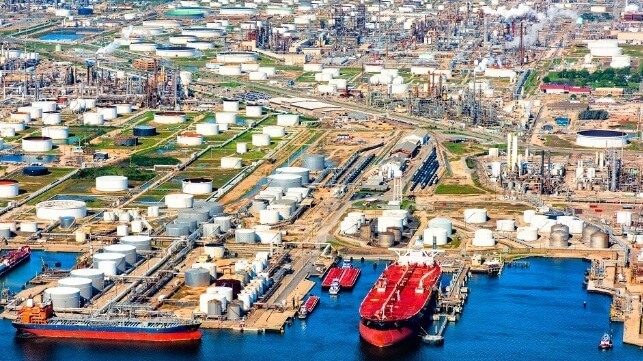Study: Tanker Sector's Profits Could Fall by a Third Due to Climate Action

In a new report, researchers at University College London and the Kuhne Foundation predict that the tanker and gas carrier segments will see their profits drop by as much as $200 billion over the next 25 years if the global economy achieves the Paris climate targets - even if all newbuild orders end. This amounts to a third of the profits that tanker companies could earn over the same period under a business-as-usual climate action scenario.
The research team set out to look at the ownership structure, asset value and transport capacity of the global tanker fleet, and how well utilized it would be under future climate scenarios. In particular, they sought to determine how much overcapacity there might be if the global economy reduces fossil fuel consumption, and the resulting impact on tanker owners' profits and asset values.
The team found that LNG, LPG and crude tankers may be oversupplied in decades ahead if the global economy cuts fuel consumption enough to meet the Paris Agreement's 1.5 degree Celcius warming trajectory. The cumulative lost profits (compared to a scenario in which the global economy does not decarbonize) could amount to up to $214 billion by 2050, even if there are no more newbuild orders. If more tankers and gas carriers continue to be ordered and built, lost profits could rise to as much as $286 billion by 2050.
"The results are quite chilling for oil and gas tankers," explains Marie Fricaudet, who led the research at UCL. "In a scenario where newbuilding of ships continues until 2030, about 37 percent of their expected profits would fail to materialize."
If demand and day rates drop, the book loss from falling vessel asset values could amount to as much as $108 billion by 2030, or as much as $147 billion if the orderbook continues to grow.
Simultaneously, this decline in tanker activity would cut the cumulative CO2 emissions of the maritime industry by 1.3-2.0 billion tonnes by 2050. This would help keep shipping within the 12 billion tonne carbon budget the industry would need to meet if it wants to achieve a 1.5 degree Celcius trajectory.
Other demand-side factors in the changing energy market - like regionalized production and reduced shipping distances - could further reduce tanker activity. On the other hand, there is also the possibility that more these vessels will keep sailing if they find a way to switch cargoes. Coal-carrying bulkers could readily switch to other dry bulk commodities, the authors noted. Tankers may also be convertible to new liquid fuels, subject to technical limitations, and these adaptations to a new green-fuel landscape might offset the lost profits of a decline in the traditional wet bulk trades.
"Our forecast, even if only indicative, should prompt investors and shipping actors to evaluate their climate risks and redirect investments. The transport sector must play a role in transitioning to a low-carbon society, with capital shifting to sectors aiding this transformation," said Stefanie Sohm of the Kuhn Climate Center.
No comments:
Post a Comment